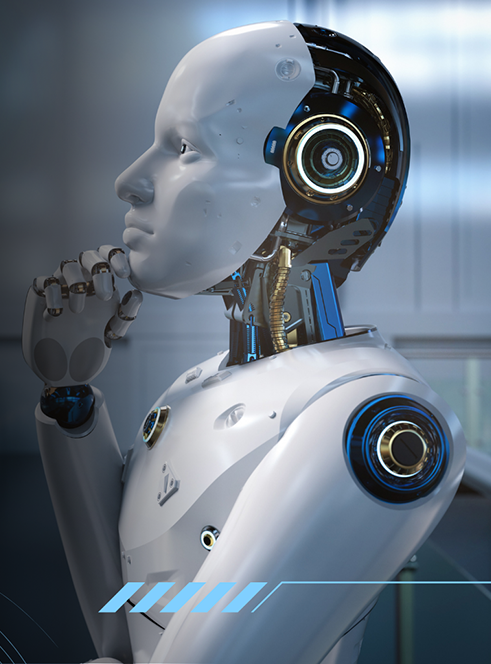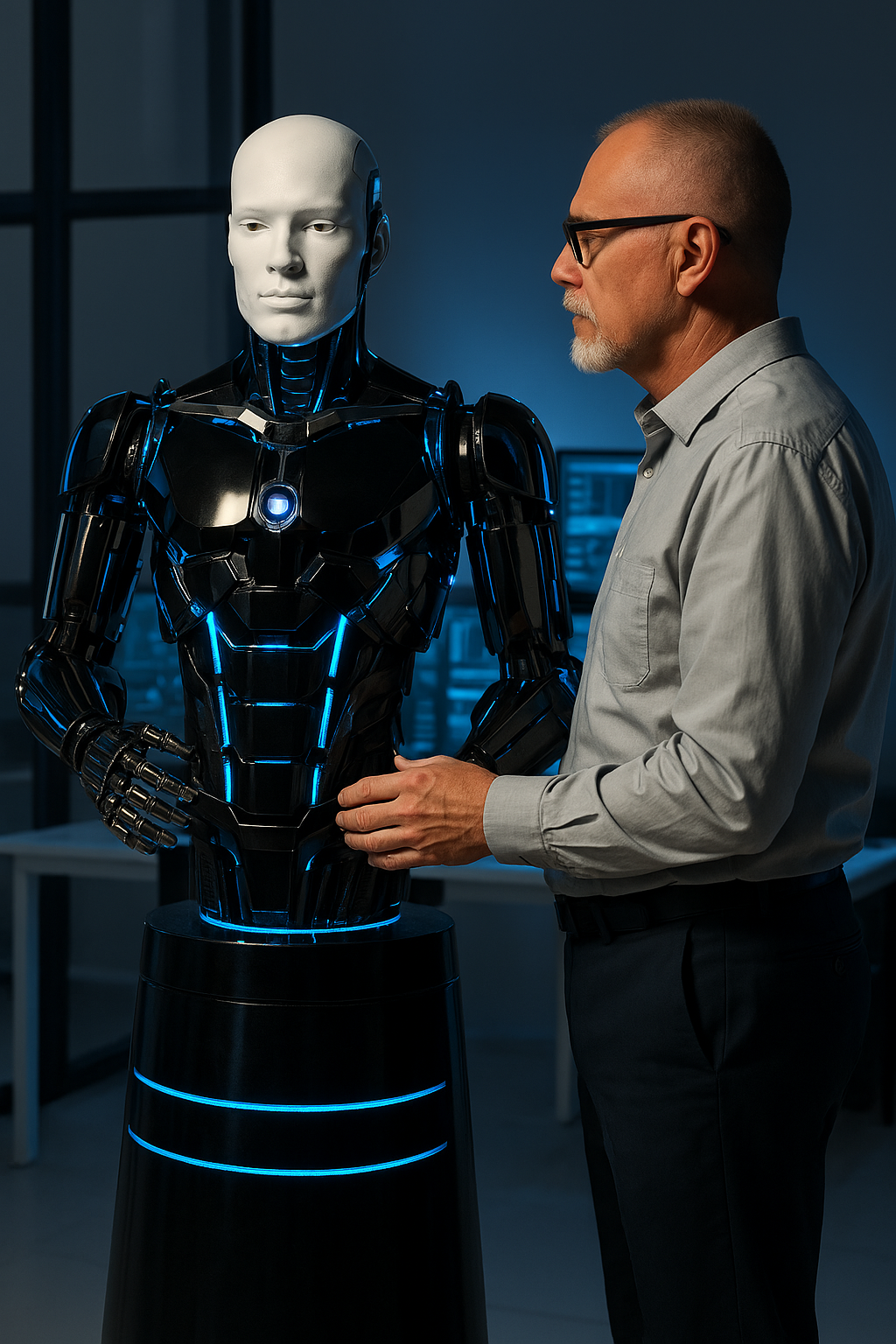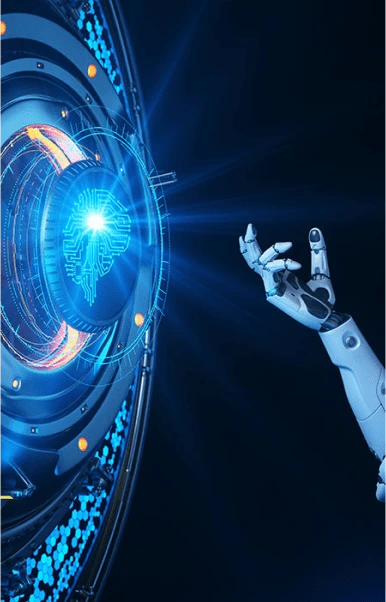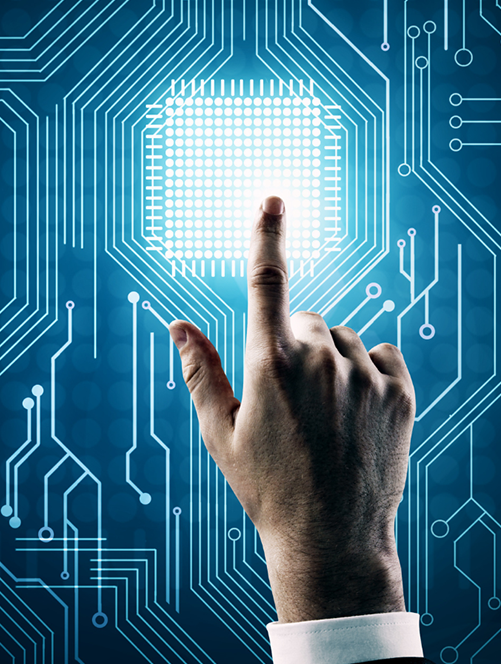we are at the forefront of technological advancement, harnessing the transformative power of artificial intelligence to shape a more intelligent and efficient future. Our commitment to excellence drives us to develop cutting-edge solutions that redefine industries and enhance human potential.
Trusted Business
Through rigorous research and development, we create AI systems that not only solve today's challenges but anticipate tomorrow's needs. Our interdisciplinary team of experts combines deep technical knowledge with creative vision to deliver unprecedented value to our partners and clients worldwide.
AI & Software Development
0%
POS Software & Service
0%
ERP Software & Service
0%


Machine Learning is a subset of AI that focuses on developing algorithms that allow computers to learn from and make predictions based on data. Rather than following explicit programming instructions, these systems improve automatically through experience.

AI programming is the process of developing software that enables machines to mimic human intelligence and perform tasks that typically require human cognition. It involves creating algorithms and models that allow computers to learn from data, make decisions, and improve over time without explicit programming for each scenario.

AI Development is the process of building, testing, and deploying artificial intelligence systems. It encompasses the entire lifecycle of creating AI applications from concept to production.

AI and IoT (Internet of Things) represent a powerful convergence of technologies that enables smart, connected systems with autonomous decision-making capabilities.

AI software refers to computer programs designed to simulate human intelligence and perform tasks that typically require human cognition. These applications use various AI techniques to analyze data, recognize patterns, make decisions, and continuously improve through experience.

Robotic automation refers to the use of mechanical systems and software to perform tasks automatically with minimal human intervention. It combines hardware (robots) with programming to handle repetitive, dangerous, or precision tasks across various industries.

AI for conversation refers to artificial intelligence systems designed to engage in natural, human-like dialogue. These systems, like myself (Claude), use large language models trained on vast amounts of text data to understand context, generate relevant responses, and maintain coherent conversations.

Machine Learning is a branch of artificial intelligence that enables computer systems to learn and improve from experience without being explicitly programmed. It focuses on developing algorithms that can access data, learn from it, and make predictions or decisions.

Cybersecurity is the practice of protecting computer systems, networks, programs, and data from digital attacks, unauthorized access, and damage. It involves various technologies, processes, and practices designed to defend against threats coming from both inside and outside an organization.

Join us on our journey as we navigate the exciting frontier of AI technology, creating sustainable, ethical, and innovative solutions that empower businesses and individuals alike to achieve their fullest potential in an increasingly connected world.

Refers to the use of artificial intelligence technologies to create innovative and efficient solutions for various problems and challenges.

Refers to the ongoing efforts and advancements to make artificial intelligence systems more dependable, consistent, and trustworthy.

Refers to the seamless incorporation of artificial intelligence technologies into existing systems, applications, and workflows.
Refers to computer programs that utilize artificial intelligence technologies to perform tasks that typically require human intelligence.
/ Year
Requirement Analysis
AI Strategy Development
AI Solution Design
Data Preparation
Performance Evaluation
These applications can learn from data, recognize patterns, and make decisions with minimal human intervention.
/ Year
Requirement Analysis
AI Strategy Development
AI Solution Design
Data Preparation
Performance Evaluation
Including natural language processing, computer vision, recommendation systems, autonomous vehicles, and business analytics.
/ Year
Requirement Analysis
AI Strategy Development
AI Solution Design
Data Preparation
Performance Evaluation
Testimonials showcase genuine feedback and experiences from customers who have used a product or service.

Years Of Experience

Worldwide User

“System has completely transformed how we handle transactions. It's intuitive, fast.”
THAIMart Company / Manager

“Feature has significantly boosted our upselling success. Our staff loves how easy it is to use!”
BiG Superstore / Manager

“Staffing is optimized, and we've reduced operational costs while improving service.”
USA Star-Group / Project Manager
Advanced Machine Learning Algorithms are sophisticated computational models designed to learn patterns from data without explicit programming. These cutting-edge algorithms include deep neural networks, ensemble methods, reinforcement learning techniques, and transformer models that can handle complex tasks such as natural language processing, computer vision, and predictive analytics. They continuously improve through experience, enabling systems to make increasingly accurate predictions and decisions while adapting to new information and changing environments.
Natural Language Processing (NLP) and Understanding (NLU) are AI technologies that enable computers to comprehend, interpret, and generate human language in a valuable way. NLP focuses on processing text and speech data, while NLU delves deeper into understanding meaning and context. These technologies power applications like chatbots, translation services, sentiment analysis, and voice assistants, allowing machines to interact with humans through natural communication methods rather than specialized programming languages or structured commands.
Computer Vision & Pattern Recognition Computer Vision & Pattern Recognition are AI technologies that enable machines to interpret and understand visual information from the world. These systems analyze digital images and videos to identify objects, recognize faces, detect patterns, and understand scenes—mimicking human visual perception. Using advanced algorithms and neural networks, they can perform tasks like image classification, object detection, facial recognition, and visual inspection for quality control across various industries, from healthcare and security to retail and manufacturing.
Predictive Analytics & Decision Support Systems combine statistical techniques, machine learning algorithms, and data mining to analyze current and historical data to forecast future outcomes. These systems help organizations make informed decisions by identifying patterns, trends, and relationships in data that humans might miss. They provide actionable insights, risk assessments, and recommendations that enhance strategic planning, optimize operations, and improve resource allocation across various sectors including finance, healthcare, retail, and manufacturing.
Autonomous Process Optimization refers to AI systems that continuously monitor, analyze, and improve operational processes without human intervention. These intelligent systems use machine learning algorithms to identify inefficiencies, adapt to changing conditions, and automatically implement adjustments that enhance performance, reduce waste, and maximize productivity. By continuously learning from data and outcomes, they create self-improving workflows that optimize resource utilization, quality control, and operational efficiency across manufacturing, logistics, energy management, and other complex operational environments.
